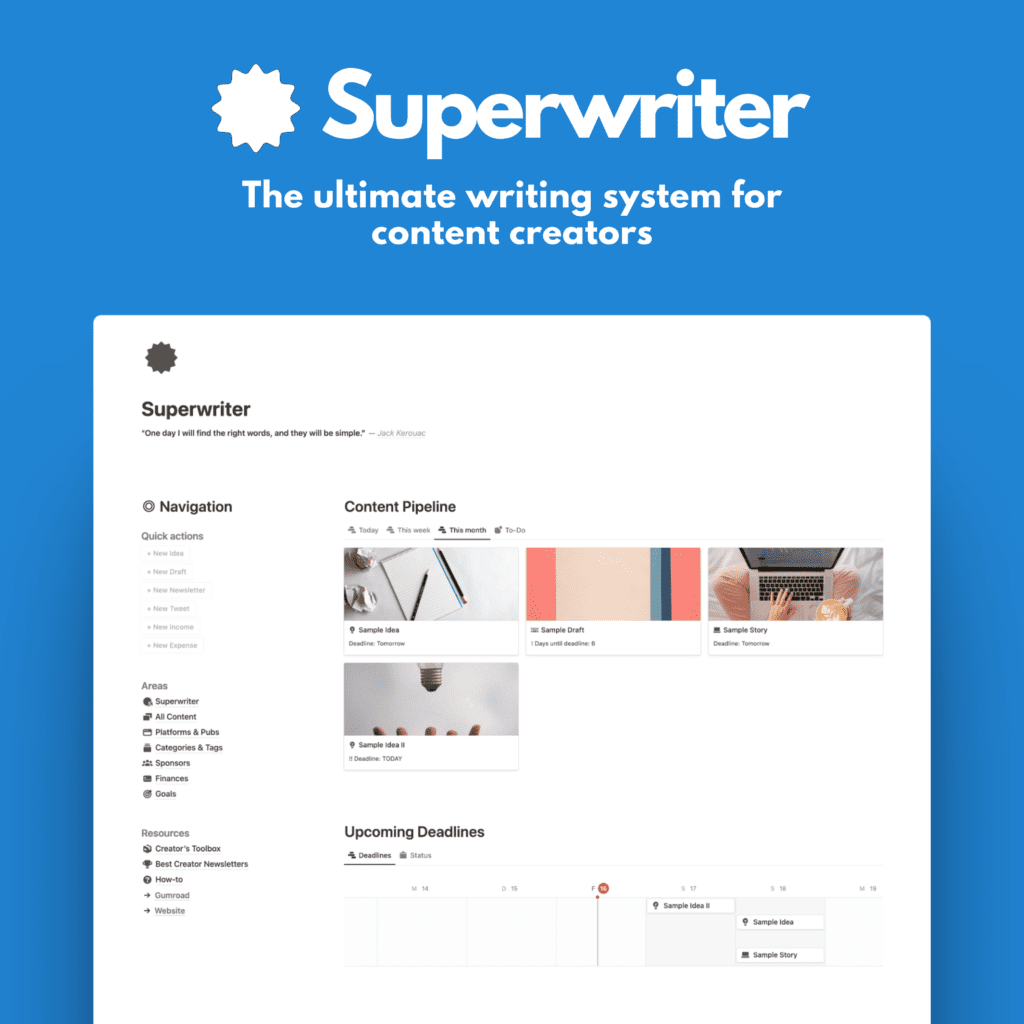Medium has become one of the most popular blogging platforms, with over 200 million monthly views.
That’s humongous.
And herein lies the biggest advantage of Medium over any other platform: A built-in audience that’s ready to read your posts from day 1!
No other platform can say that.
In fact, in my mind, there is only one other platform available today that has a similar audience-driven model, be it with a very different business model overall.
We’ll come to that in a minute but first…
Why Medium
For aspiring bloggers, Medium offers an easy way to start creating content and building an audience.
However, there are some key considerations when deciding whether Medium is the right platform.
The main questions you should ask yourself:
- What’s the purpose of your blog?
- How are you going to market & share your writing?
- Do you plan on making money & if so, in what ways?
Of course, there are dozens of other important questions, but let’s start with those.
In this guide, we’ll overview the main pros and cons of blogging on Medium to help you determine if it’s a good fit.
Why You Should Blog on Medium
Starting a blog on your own site takes significant time and effort.
It helps to think about the purpose beforehand. Is it a hobby? Is it a passion? Do you plan on making it your job?
If you want to make money, blogging needs a strategic plan. Medium is a good place to start. But it’s not the one and only thing you need.
With Medium, you can begin publishing immediately to tap into their huge built-in audience.
Here are some of the main benefits of using Medium as a blogging platform:
Try Blogging Without the Hassle
Building your own blog requires dealing with web hosting, content management systems like WordPress, web design, and more.
Medium eliminates these hurdles so you can simply focus on writing.
It’s a great way to test blogging with minimal effort.
Earn Money
Medium’s partner program allows you to make money from your stories through their revenue share model without any ads or third-party integration.
And you can earn from day one.
The requirement is that you’re a paying Medium member for $5 a month. So you need to pay money to earn money.
But it’s a low fee in my opinion. And totally worth it.
Leverage SEO Advantages
With Medium’s high domain authority, your posts have a better chance of ranking well on Google compared to a brand-new personal blog.
That’s important!
Your new blog likely starts with a domain authority score of 1 (on a scale from 1-100).
It takes time to grow that number.
Medium has a domain authority of over 90. Depending on the checker tool, it’s 94-96. So, basically the best of the best.
Posting on Medium will crush search engine rankings from day one (if you do some SEO correctly).
Your content gains trust in search engines by being hosted on Medium.
That’s actually one of the main reasons to use Medium in any case, whether you also run a blog on another platform or not.
Find a Successful Niche
Certain topics like entrepreneurship, money, writing, programming, finance, tech, and health commonly do well on Medium (over the years).
But I’d advise against choosing a popular niche just to hop on a trend if you don’t know much about it.
Rather, stick to something you’re familiar with or an expert in. That will help in the long run.
Get Your Voice Heard
A new blog usually takes significant time to build an audience.
And quite some knowledge in SEO and analytics.
But Medium provides access to millions of readers from day one without any additional knowledge or practice.
By targeting relevant publications, of which Medium has thousands (and many incredibly large and famous ones), you can reach interested readers fast.
Thousands of readers!
Establish Authority on a Topic
Publish regularly in your niche.
Use Medium’s built-in mailing list feature to grow your platform-independent audience as well.
This means these subscribers are yours, you can download a CSV-file with those email members and import them into other email list tools and newsletter platforms like Substack, ConvertKit, Beehiiv, Mailerlite, etc.
Grow subscribers focused on your specialty.
Connect with Fellow Writers
Engage with the Medium community by commenting on posts, collaborating on publications, and connecting on social media.
It’s a great way to build relationships. Medium is a social platform, after all, that’s what I mean by an audience-driven platform as well.
Still the Best Platform Option
With Medium’s popularity, domain authority, and community, it remains one of the top blogging platforms available today.
For many niches, it may be superior to alternatives.
Alternatives?
Speaking of alternatives, there’s really only one platform that has a similar potential for writers.
Of course, there are hundreds of blogging platforms. Traditional ones like WordPress, new great ones like Ghost, or complex website builders like Squarespace, Wix, and Weebly.
But those are very different in format. They don’t provide an audience. They provide all the tools and customization you could ever need, but they don’t help you reach readers.
Medium does.
And the only other platform that also helps you reach new readers through discovery, recommendations, and a large, vibrant community is… Substack.
This is why Substack is the second-best blogging platform 2024, in my humble opinion.
To sum up:
Similar platforms
General alternatives
- WordPress
- Ghost
- Squarespace
- Wix
For a longer list, check out my top 10 blogging platforms 2024 here ↗.
Back to Medium.
Reasons You Might NOT Want to Use Medium
Using Medium does come with some downsides primarily related to their control over the platform.
Here are some of the top reasons you may want to avoid Medium:
Medium Owns Your Content
Not technically. You of course hold the copyright and ownership of your creations.
BUT Medium can delete your content at any time if they deem it inappropriate or against their policies.
They won’t do that often or without notice (usually), but it can happen.
You have no recourse if your hard work is removed.
Focus on Content Over Creators
More significantly, the platform cares more about content to attract and retain readers rather than supporting creators.
Medium wants readers who become Medium members and pay.
That means they will distribute content that achieves this goal, rather than supporting individual writers.
Although both can apply at the same time.
Lack of Customization and Control
Not really a biggie for me, but for some this is crucial.
You’re limited by Medium’s design and features.
You can’t customize your profile or page much, and there are no other ways to customize Medium or add your brand identity other than your logo and bio.
Also, you have no say in key policies around content and compensation.
Want Your Own Blog
Once you outgrow Medium, having your own blog allows full creative freedom and control.
Don’t build long-term on a platform you don’t own.
Instead, use both to your advantage. Have your own blog on a self-hosted platform like WordPress and publish your content there.
Then republish your content on Medium to tap into the large audience.
No ads
Finally, Medium does not allow for ads in your content. No Google AdSense or other code injections.
You can, however, incorporate affiliate links into your writing (if you disclose that).
The Bottom Line
Medium offers an easy way to start blogging and tap into a large audience.
But the lack of control and content ownership are significant limitations.
Weighing the pros and cons based on your specific goals will determine if Medium is the right initial platform, or if you’re better off with your own site from the start.
First tip: Use Medium alongside another blog that you own (and can customize and use with ads) to benefit from both worlds.
That has many upsides and limits some of the downsides of Medium alone.
Second tip: Also use Substack (or another newsletter platform) to really benefit from the subscriber aspect of writing, keeping loyal fans close.
Substack also adds another built-in audience and community to the mix.








